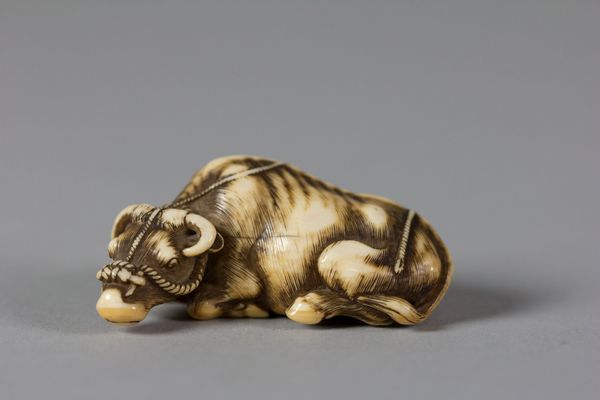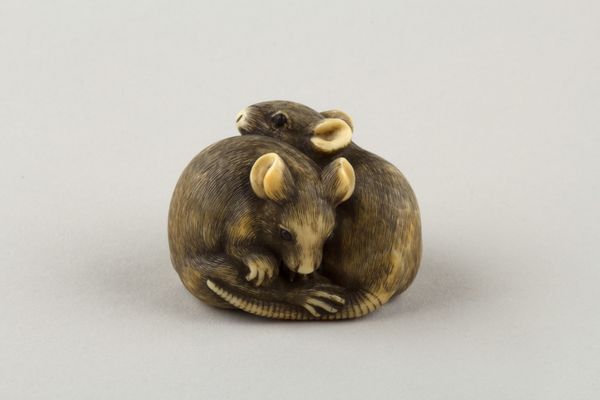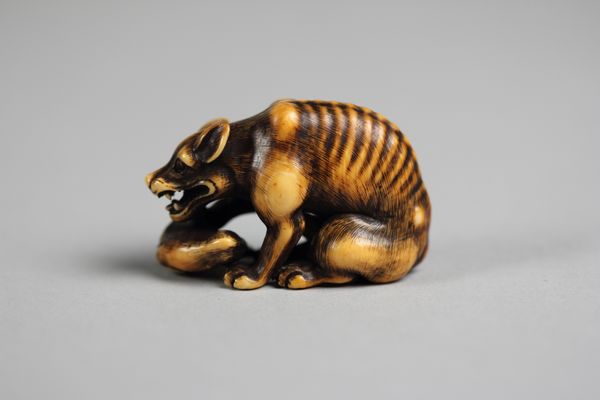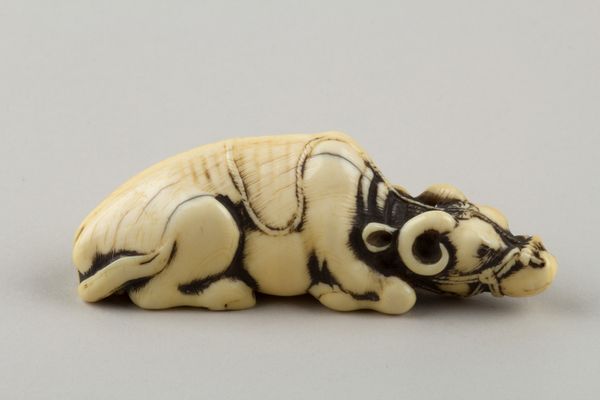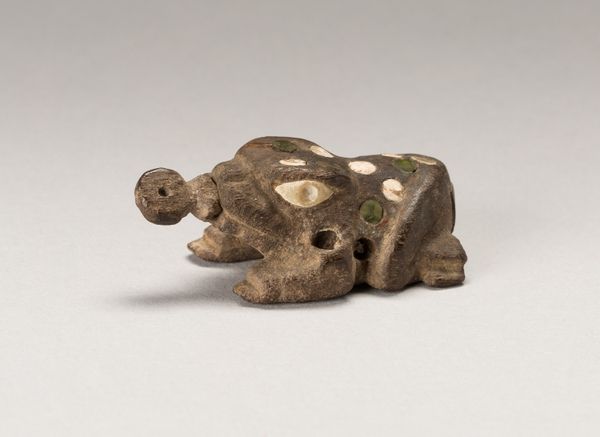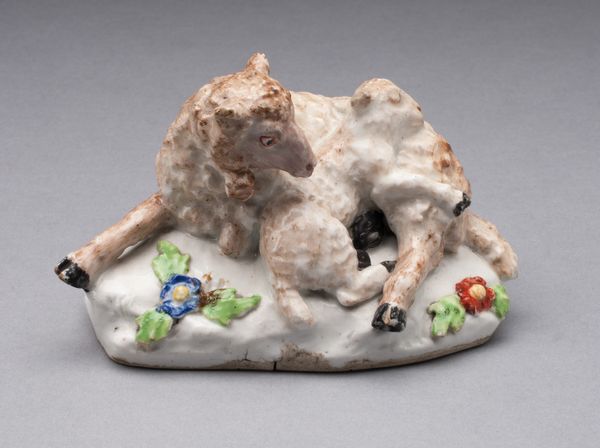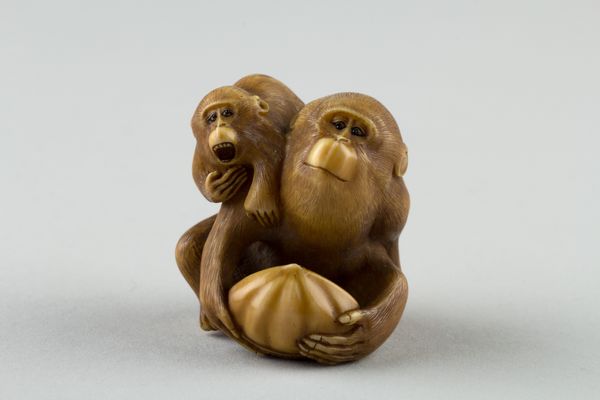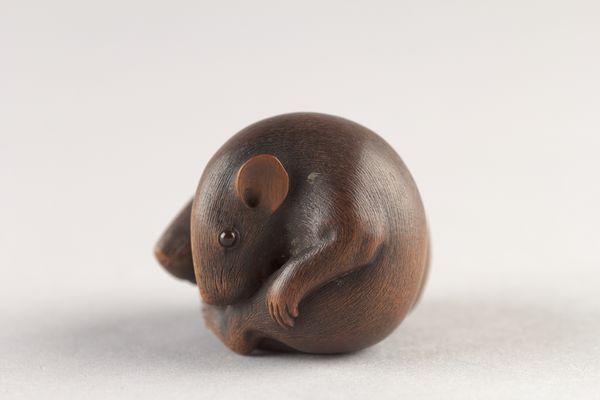
carving, sculpture, wood
#
carving
#
animal
#
asian-art
#
figuration
#
sculpture
#
wood
#
miniature
Dimensions: H. 1 in. (2.5 cm); W. 1 1/4 in. (3.2 cm); L. 1 9/16 in. (4 cm)
Copyright: Public Domain
This Netsuke of Three Rats was carved by Nagahisa, but the exact date is not known. As a small, hand-held sculpture, Netsuke like this one were functional fashion accessories in Japan. They acted as toggles for cords that suspended pouches, pipes, or other personal items from the sashes of traditional kimonos, which lacked pockets. What makes this netsuke interesting is that it represents rats. In Japanese culture, rats are associated with Daikoku, one of the seven gods of good fortune. Daikoku is often depicted standing on bales of rice, with rats nearby as symbols of agricultural abundance. In this carving, three rats huddle together, their forms compact and smooth to the touch. The intimacy of the group is emphasized by the way their bodies intertwine. To fully understand this work, we might ask: how does this particular image of the rat play into broader cultural associations and institutional histories? By consulting historical texts and visual archives, we can better understand the contingent meanings of this small but fascinating artwork.
Comments
No comments
Be the first to comment and join the conversation on the ultimate creative platform.
